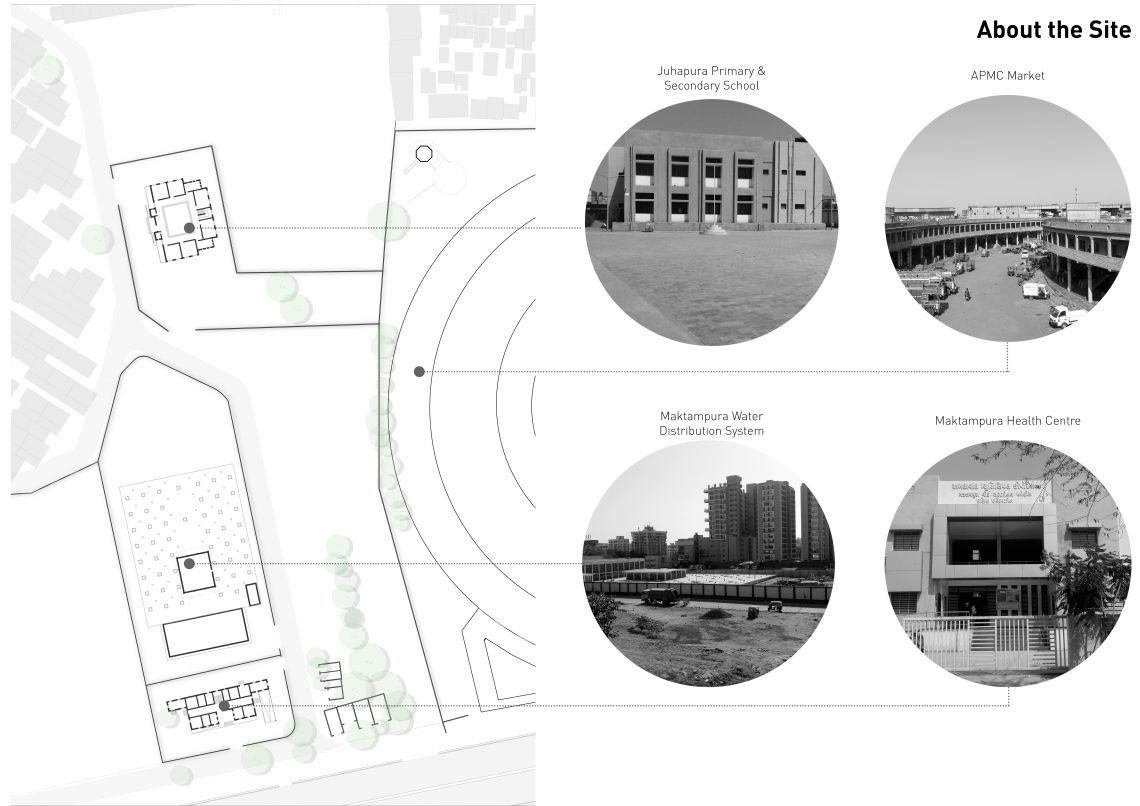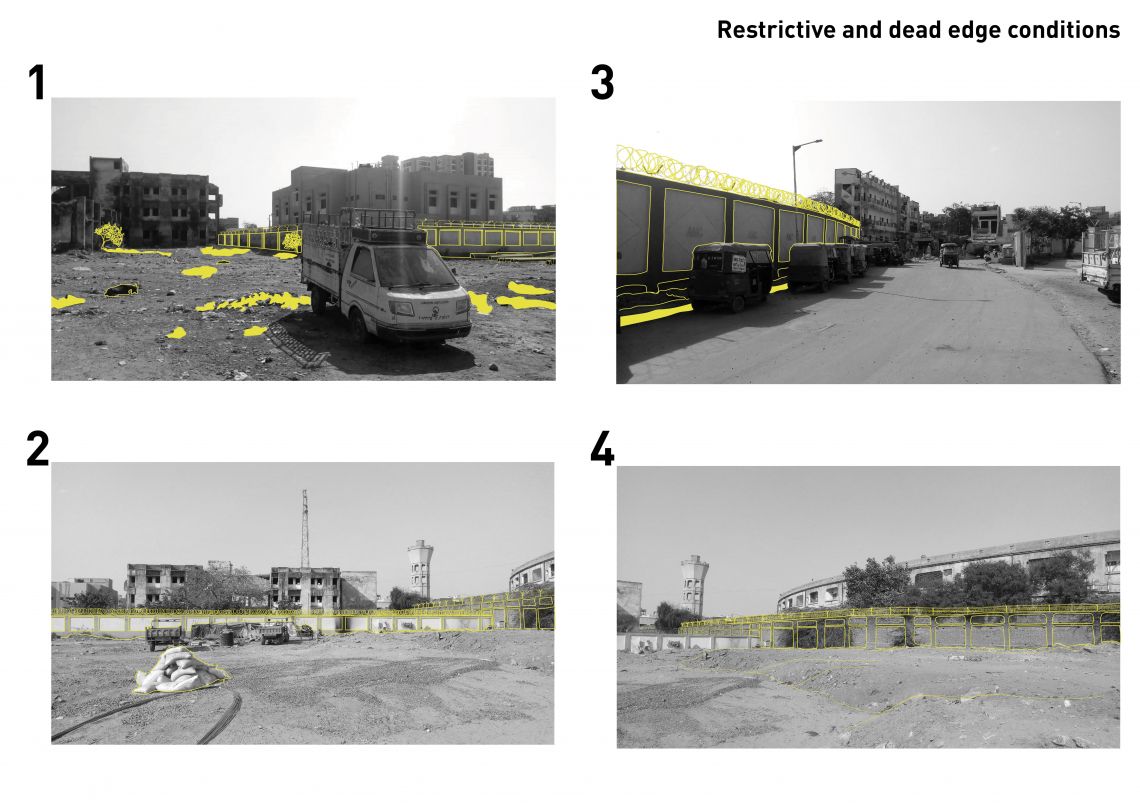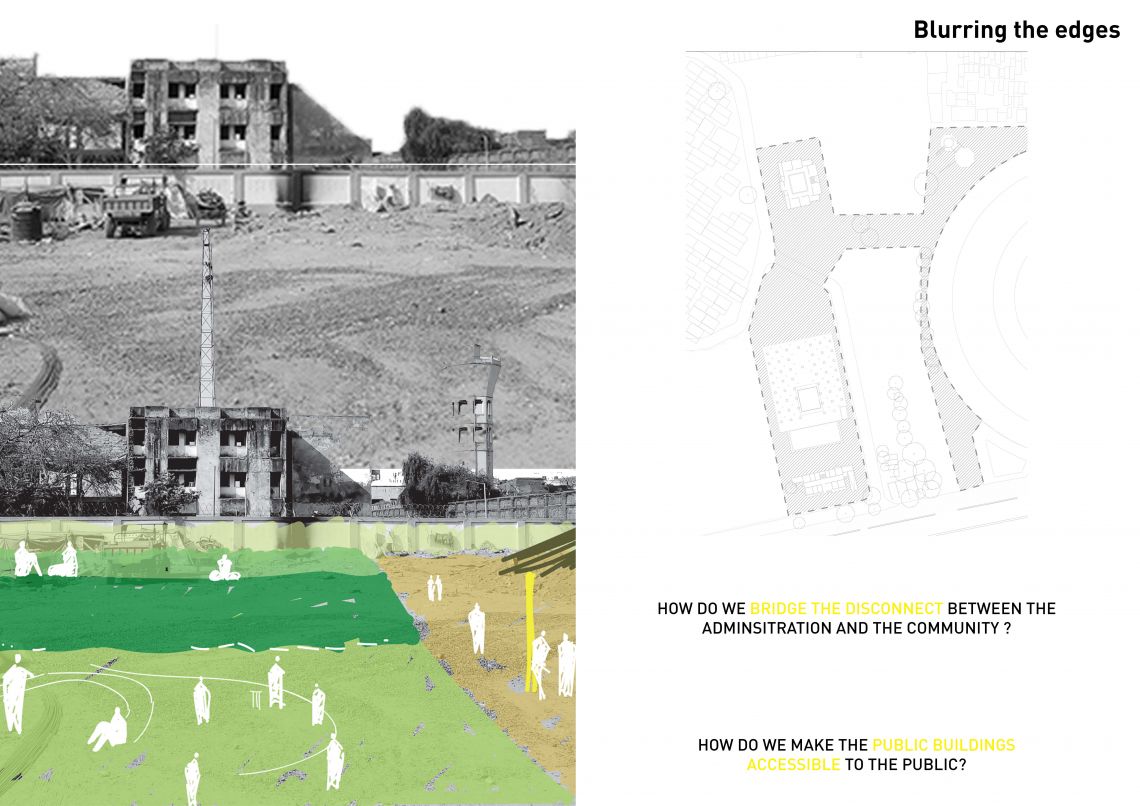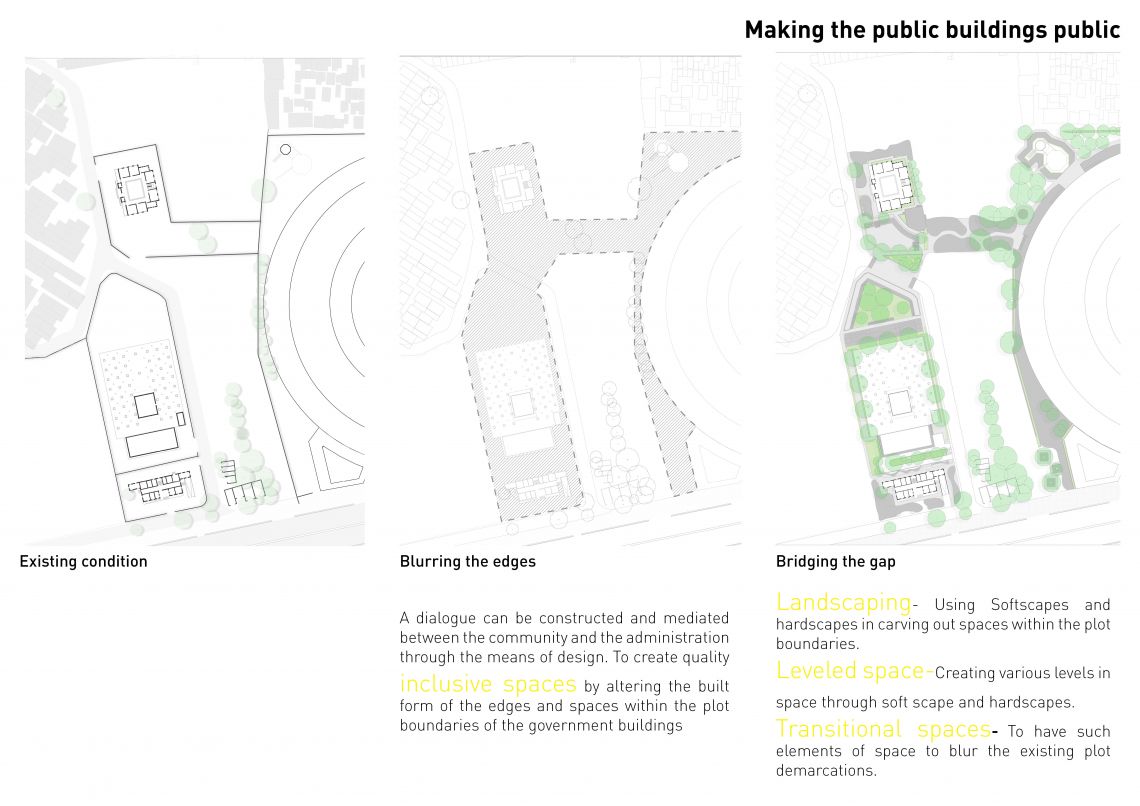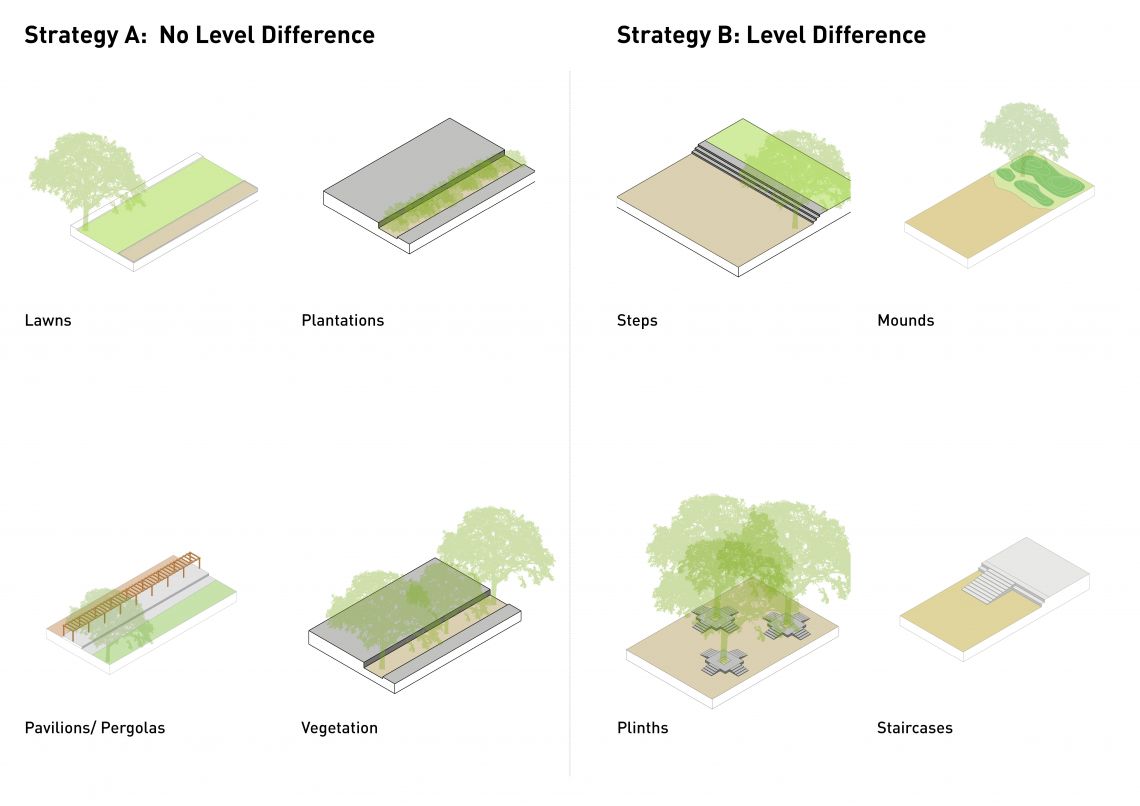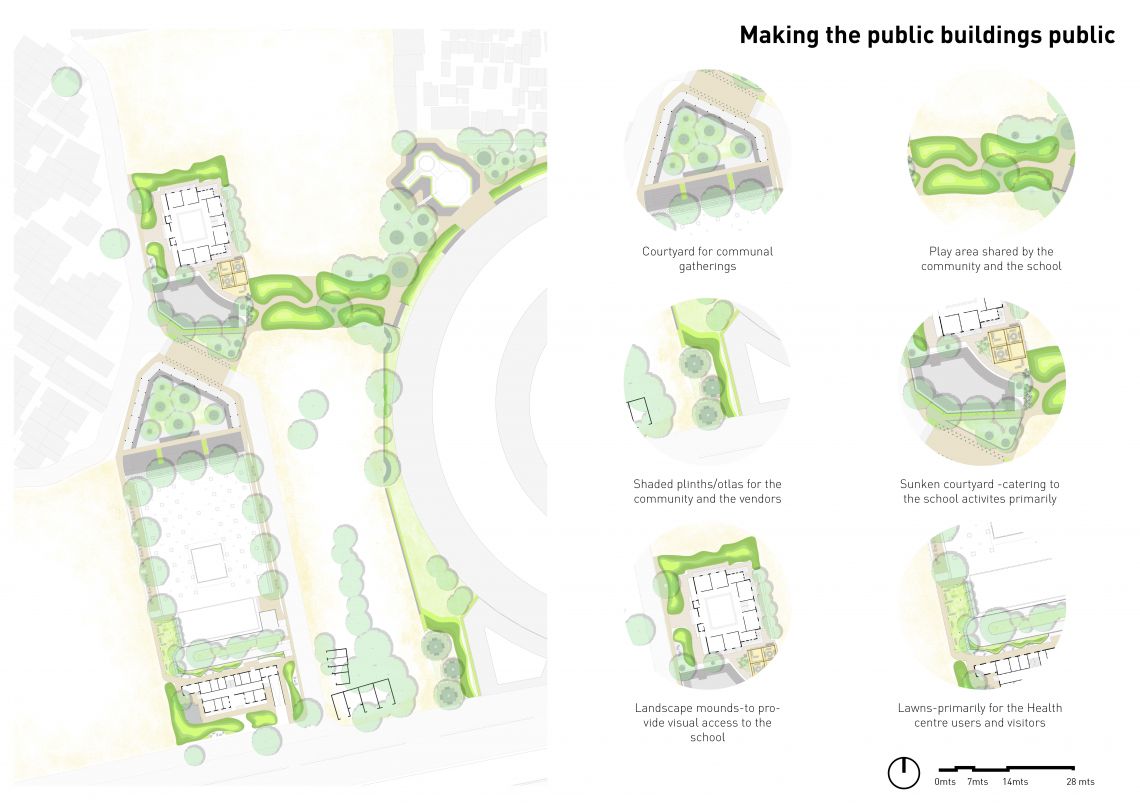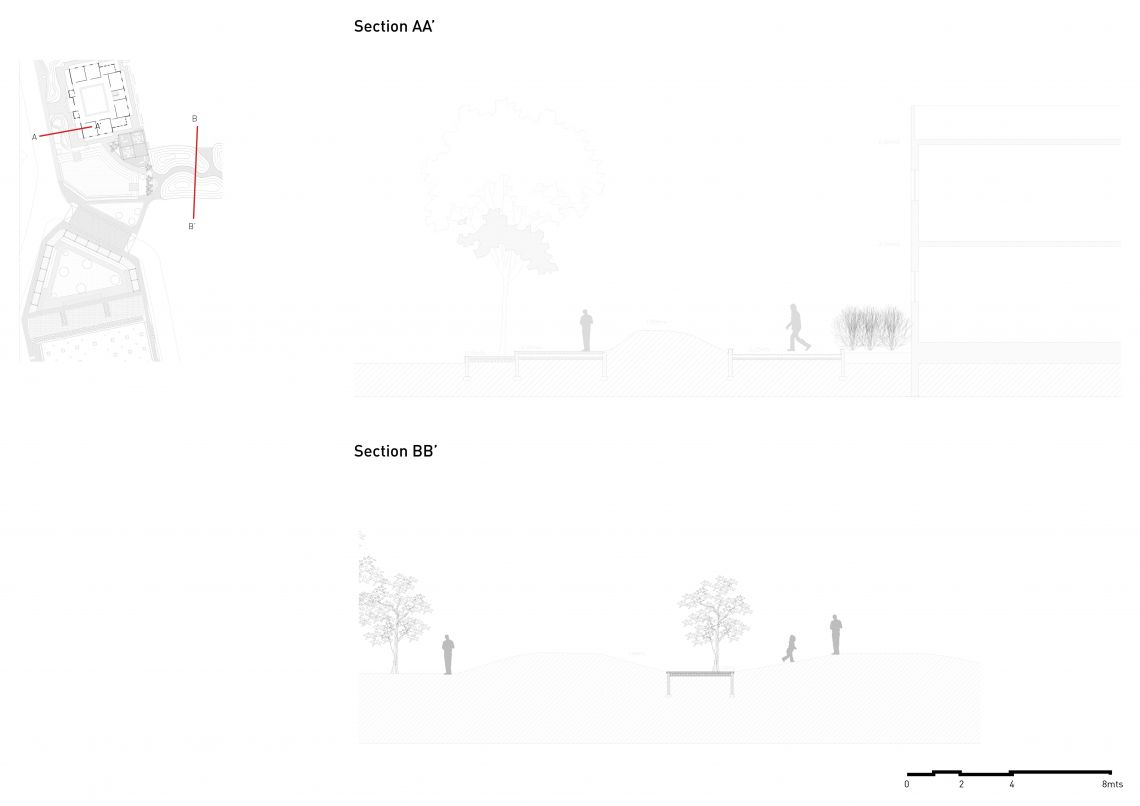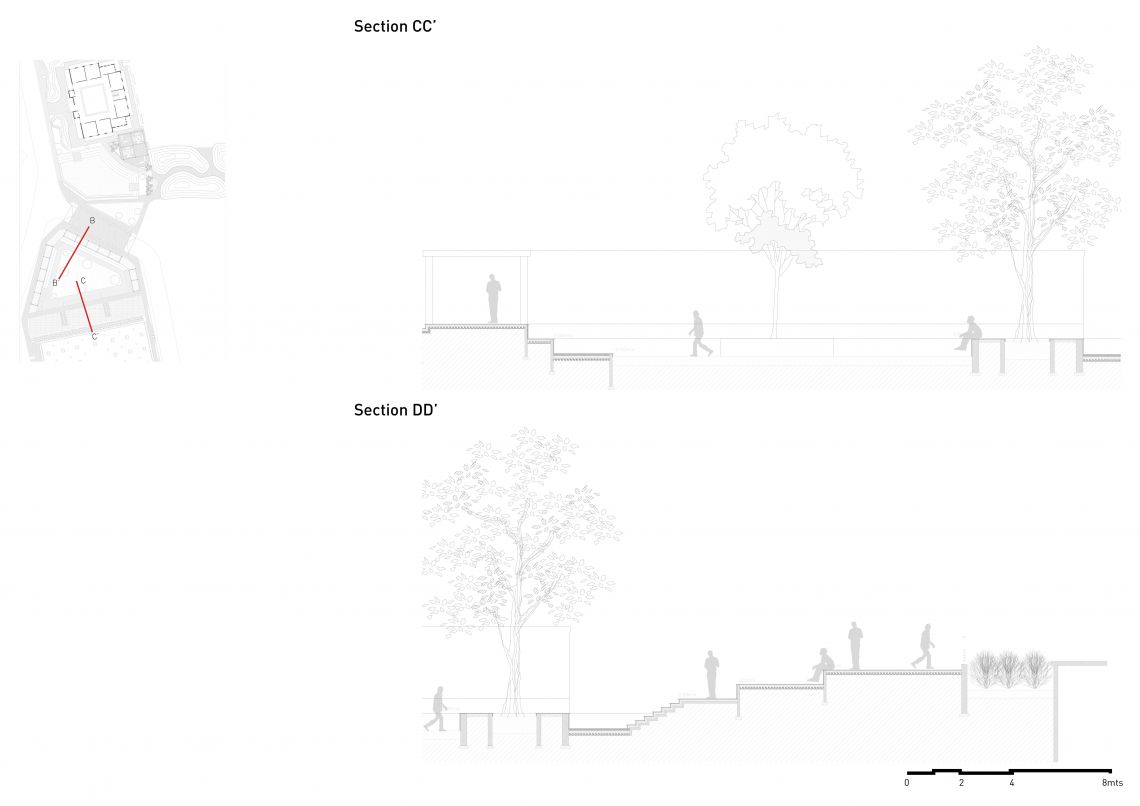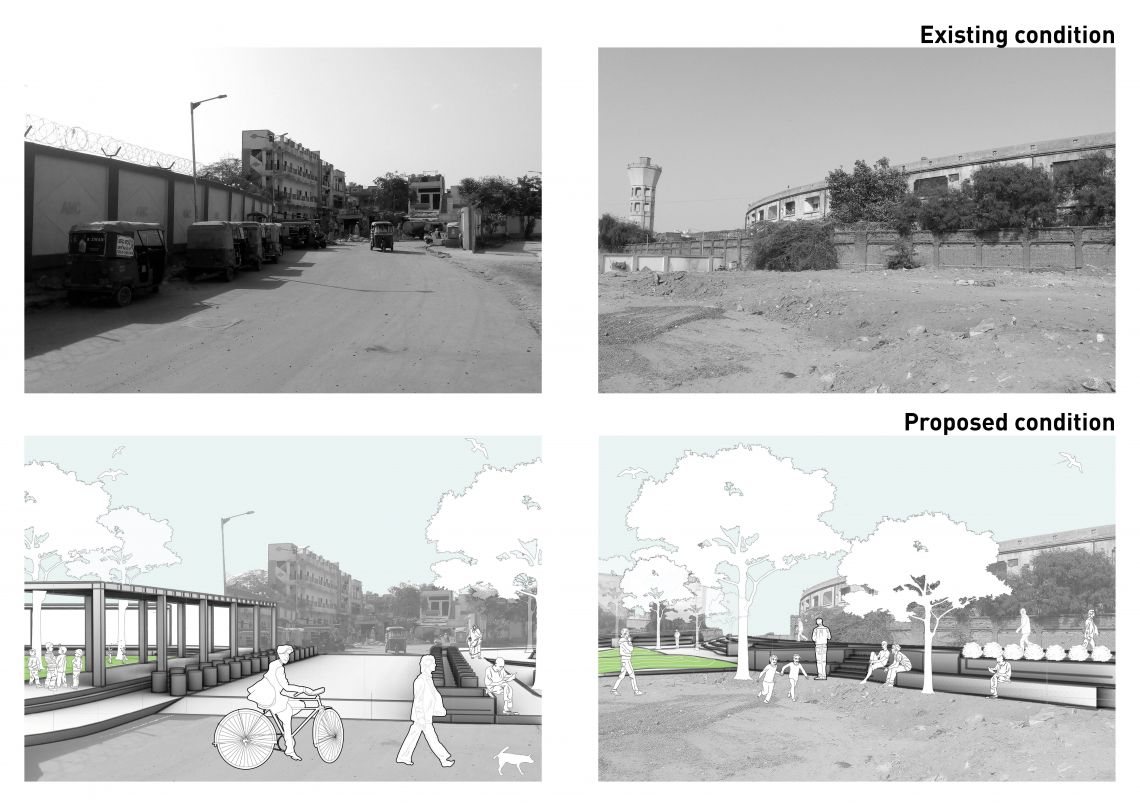Your browser is out-of-date!
For a richer surfing experience on our website, please update your browser. Update my browser now!
For a richer surfing experience on our website, please update your browser. Update my browser now!
The trajectory of development focuses on a set agenda which often neglect some section of the society. This creates a sense of disconnect which gets implanted in the community; a sense of disconnect from the service providers and the government and lack of a mediator who can effectively communicate the concerns and needs of the community to the responsible authorities. The concerns addressed by the authorities are in such a manner that they often nurture a sense of restriction for the community which plays out in the built form. The edge conditions around the administrative buildings have taller walls with barbed wires. This restricts the visual and the physical access into the buildings and consequently the spaces around the edges become inactive which are merely used for garbage disposal. A dialogue can be constructed and mediated between the community and the administration through the means of design. Creating quality inclusive spaces by altering the built form of the edges and spaces within the plot boundaries of the government buildings helps in diluting the strong sense of restriction. The potential of these spaces can be realized by re imagining the edges and adding functions to the spaces, such that it can be used by the community and the users of the government buildings. It is an opportunity to create spaces which can initiate dialogue between the administration and the adjacent community, either visually or physically or through both.
